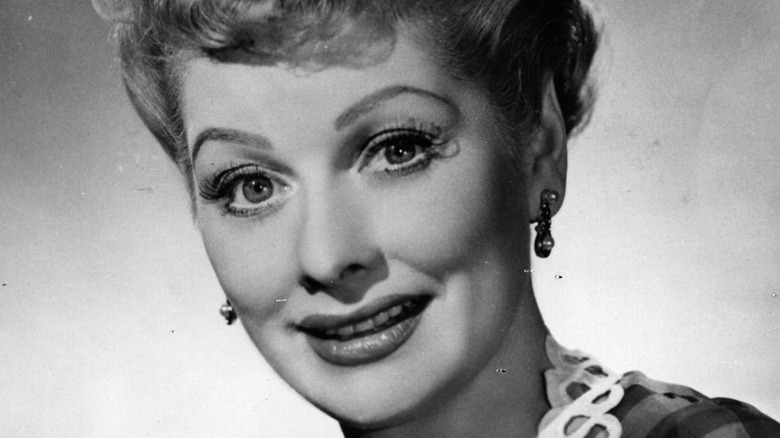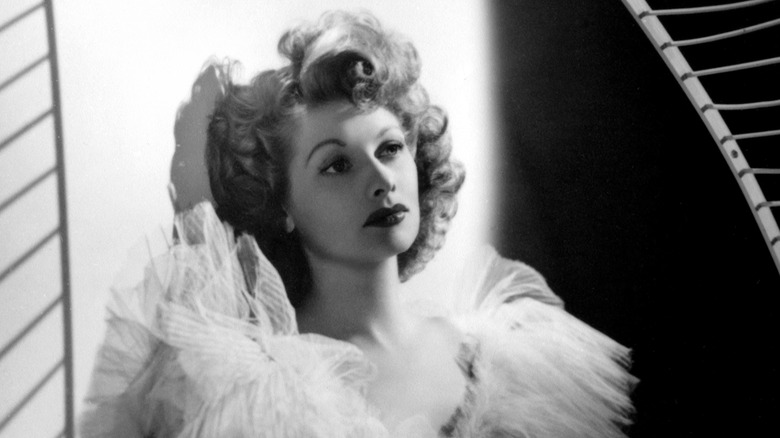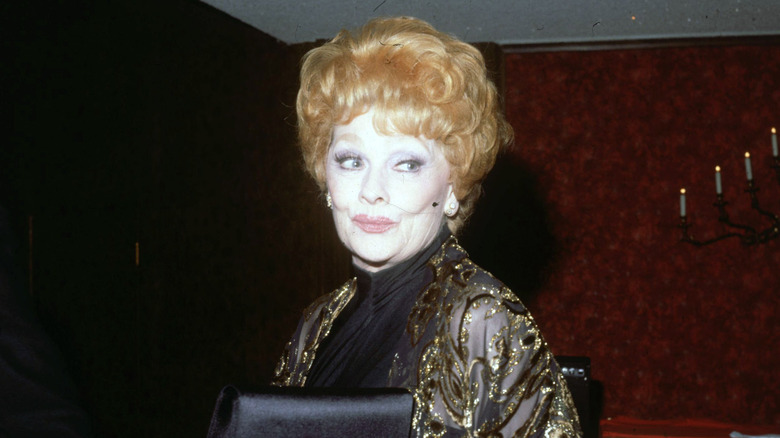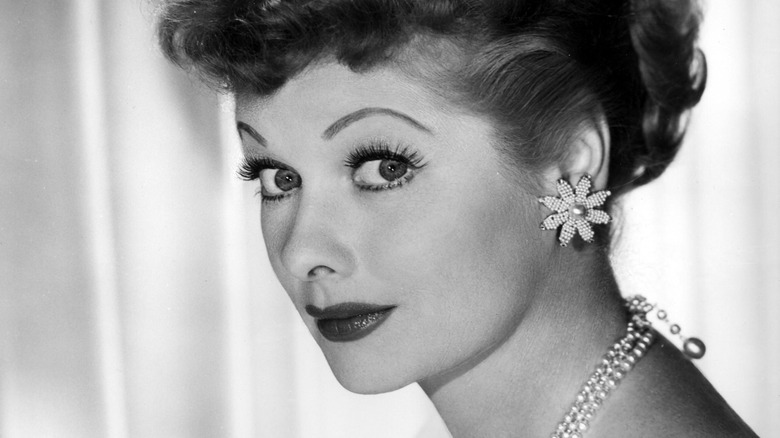Disturbing Details Discovered In Lucille Ball's Autopsy Report
Entertainer Lucille Ball made her mark in Hollywood as an accomplished comedienne, finding international fame as the funny redhead in the groundbreaking TV series "I Love Lucy." The show kicked off in 1951 and catapulted Ball and her husband, Desi Arnaz, into the living rooms of millions of Americans every Monday night for the next six years, until the show ended in 1957. It was the first program aired by Desilu Productions, Inc., a studio founded and co-owned by Arnaz and Ball. Desilu Productions went on to produce many other classic series, including "Star Trek," "The Andy Griffith Show," and "Mission: Impossible" (via Library of Congress). The success of Desilu made Ball one of the few female studio executives of her time, a savvy businesswoman in a male-dominated field. It was a truly extraordinary achievement for a woman in 1950s America.
But "I Love Lucy" wasn't the start of Ball's long and accomplished career — far from it. According to The New York Times, Ball spent time working at a drugstore on Broadway as a waitress and soda jerk, while auditioning for shows without much success. Eventually, she found work modeling hats and posing for advertisements. She was even the Chesterfield Cigarette Girl in 1933. (According to the New York Post, Ball smoked for much of her life, and it's thought that her habit was a contributing factor in death.) Yes, she was that photogenic, and it wasn't long before Tinseltown came calling.
Lucille Ball's early career
She was a serious movie actress long before "I Love Lucy" ever hit the small screen, but luckily for Lucy fans the Hollywood studios didn't know what to do with her, even though her glamour and style rivaled that of other great film stars of the 1930s and '40s. Her success as a model helped her get into Hollywood, where according to The New York Times, she first appeared as a chorus girl in the 1933 film "Roman Scandals." After that she continued to play small, often uncredited parts in films. She frequently appeared in more dramatic fare, though she also performed in some comedies, even alongside the Three Stooges (1934's "Three Little Pigskins," posted on YouTube).
In the 1940s, Ball dyed her hair red, something she had been advised to do by MGM to rejuvenate her career which by then had stalled (via Biography). Her red locks went on to become one of her calling cards, and after a spell on radio, she and her husband, Desi Arnaz, landed their signature TV series, "I Love Lucy."
Lucy's late career
"I Love Lucy" ended its run in 1957, but Desilu Productions continued to be extremely active for the next few years and produced major TV shows spanning various genres, including "The Dick Van Dyke Show," "Mission Impossible," and the original "Star Trek." Ball and Arnaz divorced in 1960, and according to Biography, Ball bought out her ex-husband's share of the studio. Once she was completely in control of Desilu, she earned her place in history as the first woman to run a major studio. She sold the studio in 1967 for $17 million.
Lucille didn't rest on her laurels after the success of "I Love Lucy" and Desilu Productions; instead, she continued working. She had two back-to-back sitcoms in the 1960s and 1970s — "The Lucy Show" and "Here's Lucy" — which were by no means failures, but never achieved the levels of success her first crack at a sitcom did. In the 1980s Ball appeared in a dramatic role in the TV movie "Stone Pillow," and in 1986, she debuted her fourth sitcom. This one was called "Life with Lucy," and while she was paid handsomely to do the show, it was easily the biggest failure of all of her sitcoms, lasting only eight episodes.
Lucille Ball died from a ruptured abdominal aorta
Ball married comedian Gary Morton in 1961. They remained married until her death. The Queen of Comedy passed away on April 26, 1989, at the age of 77, eight days after undergoing emergency heart surgery. The cause of death at Cedars-Sinai Medical Center in Los Angeles was determined to be a ruptured abdominal aorta, in a different location from her surgery (via Biography). But questions remain about what caused so much damage to such a critical blood vessel.
For several years before her death, Ball was using amyl nitrate, also a popular street drug, known at the time as poppers, to ease chest pain, according to People. Forensic pathologist Dr. Michael Hunter, who reviewed Ball's autopsy report, says it was originally used as a prescription drug to treat chest pain (via Reelz Channel). "As early as 1984, four years before her death, Lucille Ball was using this inhalant to ease pains in her chest and heart. And that could be a warning sign of already established cardiovascular disease," Hunter said. Her autopsy also revealed that a condition called cystic medial necrosis, a breakdown of muscle, collagen and elastin in the large blood vessels, contributed to Ball's death, Hunter said.



